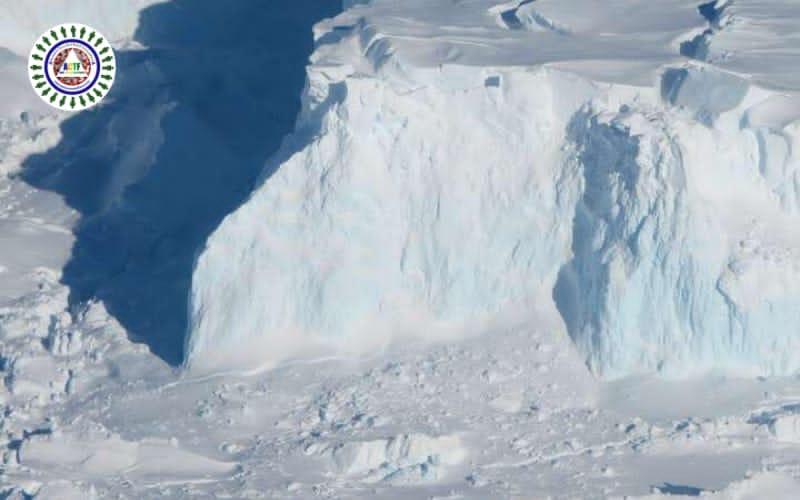
ANTARCTICA’S ‘DOOMSDAY GLACIER’ HAS SPARKED WORRY, AFTER ITS NEW DISCOVERIES
he Thwaites Glacier of Antarctica has been melting at a faster rate over the past few decades. It is producing a potential threat of speeding up global sea-water level rise. The culprit behind this has been discovered by the researchers. The glacier is popularly known as the ‘Doomsday Glacier’. Researchers said the fears related to the melting of Thwaites are much worse than previously estimated, mainly due to miscalculations of the rate of warm water flowing underneath the glacier. What is the importance of this glacier? The Thwaites Glacier is 120km wide at its broadest end. It has been melting and moving fast over the years. This massive glacier holds a tremendous amount of water (frozen) into it, and its size is around 1.9 lakh square kilometers! It has the potential to increase the global sea level by more than half a meter. Over the past 30 years, the amount of ice flowing out of the glacier has increased 2x times. Each year 4% of global sea-level rise is contributed due to the melting of the Thwaites. According to the estimations, if climate change is not controlled, then the Thwaites Glacier might collapse fully into the sea in the next 200-900 years. Thwaites is extremely important for Antarctica because it prevents the ice in its central region (rest of the ice present in the mainland of the continent) from melting and flowing freely into the ocean. Due to all the risks, it faces, the Thwaites Glacier is often called the ‘Doomsday Glacier’. What have the studies say? A fast-growing cavity was discovered by the researchers in 2019. Then in 2020, the flow of warm water was detected under a vital point of the glacier. The temperature of this water was just 2 degrees Celsius above the freezing point of the “grounding line” or “grounding zone” at Thwaites. The place under the glacier where the ice transitions between floating on the ocean and resting fully on the bedrock as an ice shelf are known as the grounding line. When a glacier melts and one of its parts floats off, then a greater portion (surface) of the glacier gets exposed to the groundwater, and it is likely to move faster. In a recent study, (2021) the researchers have found 3-4 major channels beneath the glacier which supply warm water to it. All these observations were taken by sending an unmanned submarine under the glacier. The submarine was loaded with high-accuracy sensors, to detect the physical parameters of the glacier. Conclusion The study found that warm water is approaching the crucial points of the glacier from all sides. The warm water has the potential to make this worse for the Thwaites glacier. The only good news is that the researchers have been able to collect all the necessary data for creating a dynamic modal of Thwaites. This data and model will help to calculate the melting rate and rise in seawater level in a better way, and we will be able to take proper action to prevent the flow of warm water beneath the glacier in the future.
All Categories
Recent Posts
UP Budjet 2023
Chances of the new variant causing severe illness
ALL YOU NEED TO KNOW ABOUT MULTIPLE MYELOMA, TYPE OF BLOOD CANCER
Quick support proccess
8766384299




